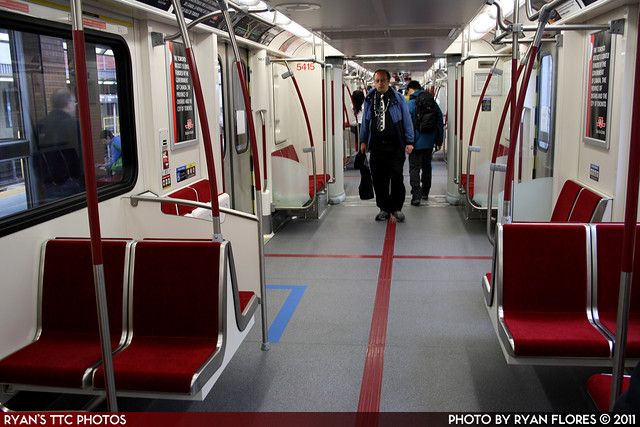MTA Considering Articulated Subway Cars With No Gaps, No Escape

For decades, Americans were endlessly hyped about what bold and novel wonders the 21st Century had in store for us. Flying cars, apartments on the moon, and sassy robot butlers were promised to all. But, instead, we got computer phones, Wikileaks and unlimited access to pornography. While these advancements have their benefits, they don’t reflect the Jetson-esque utopia of our collective imaginations.
In this spirit of reduced expectations, the MTA rolled out their plan to build a fleet of new subway cars, which promise to be more logically spaced, allowing for increased flow and more space, blah, blah, blah. To the surprise of only the most optimistic futurists, the trains will not be streaked with pulsating neon, hovering over the rails on magnets, and will not be equipped with turbo drives.
According to a report in the New York Times, which spotted the plans laid out in a document by the MTA for 2015-2034, the new articulated and logic-friendly (boring) trains are being seriously discussed by transit planners.
Articulated trains would connect all the cars of the subway, allowing people to stand in accordion-like spaces between the cars.
“This will both maximize carrying capacity,” an MTA official told the Times, and allow passengers to “move to less-crowded areas of the train, balancing loading and unloading times at all doors.”
This type of train is already used in Paris, Toronto and Berlin. Still, implementing a whole new type of train to the system isn’t something that can be done simply. The Times noted that the plan will take years of planning and also touched on the history of articulated trains in the city:
Adam Lisberg, the authority’s chief spokesman, said that increased capacity could improve “dwell time” — the period during which a train is stopped in a station, often because of overcrowding — and allow more trains to run. He cautioned, though, that with a 109-year-old system, any major change required extensive review.
“If you make a bad call on changing equipment in a new subway car order,” he said, “the consequences can be pretty serious.”
In fact, New York City has a history with articulated trains. In 1924, the Brooklyn-Manhattan Transit Corporation introduced plans for the “Triplex,” with a hinged, multisectioned body. It operated on the B, D, N, Q and R lines over a period of 40 years, representing “the height of transit modernity” at a moment when elevated lines often still featured wooden cars, according to the New York Transit Museum.
Despite offering greater space and flow, articulated trains have some serious drawbacks. For example, if someone vomits, urinates or God-knows-what-else in a car, train operators won’t be able to seal off that section like they normally would, forcing passengers to flea as far as possible from the mess. Andrew Albert, another MTA official, spoke to how articulated trains also have a downside when it comes to crime.
“Remember the time when we were in the high-crime era and gangs were roaming through the trains? Everybody loved the locked end doors,” Albert told the Times.
Personally, I guess that if the kinks of an articulated train system could be managed effectively, it would represent an upgrade over what we have now. Still, I’m bummed that the new trains, which we may not see for decades, are essentially going to be what people in Germany and Canada have been using for a while. When is New York going to really become the “city of tomorrow” and do something bold and incredible with their public services?
Sometimes it feels like the future is slipping through our fingers. Tube transport system, anybody?




